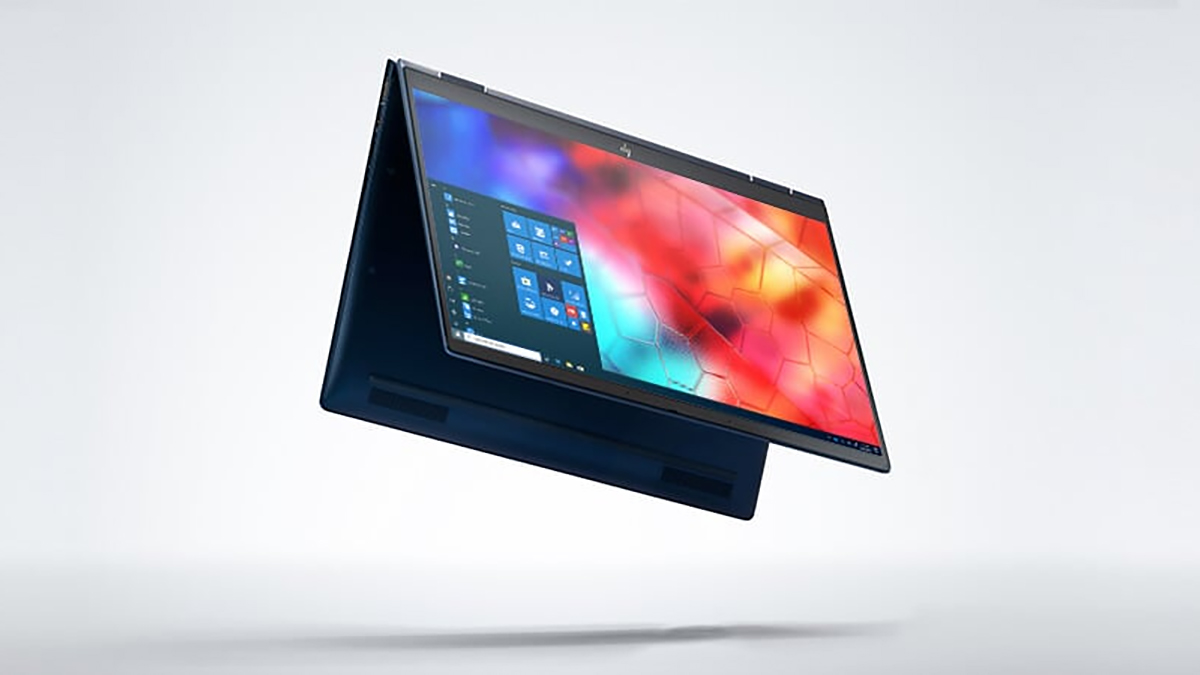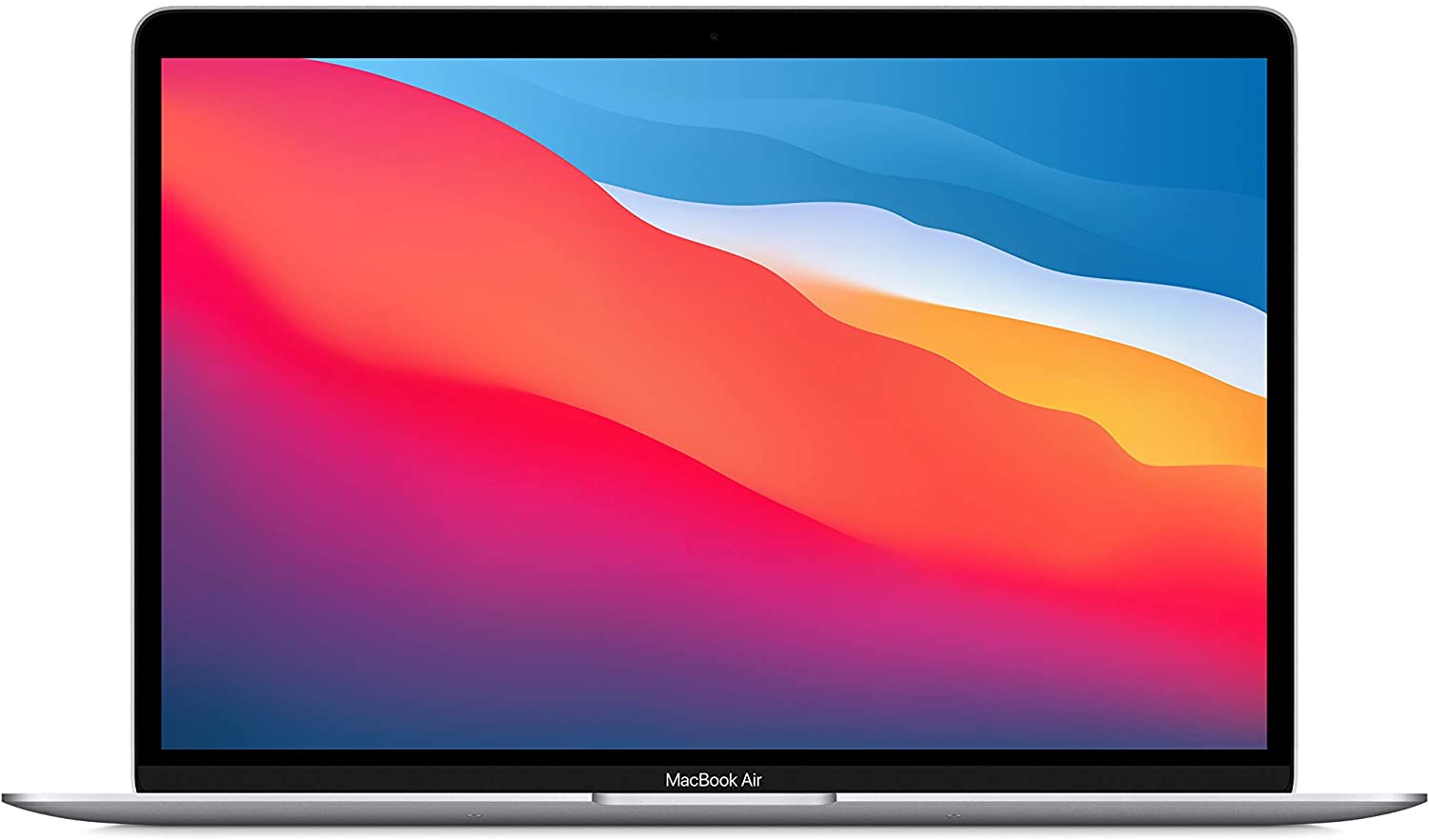HP Elite Dragonfly vs MacBook Air: which powerful ultraportable is right for you?
Two gorgeous laptops, one Windows and one Mac. Is the HP Elite Dragonfly a better bet than the MacBook Air?


Apple pretty much invented the lightweight laptops category with the original MacBook Air, but the best lightweight laptops don’t necessarily have an Apple logo on the lid. There’s a good selection of useful, powerful ultraportables out there, and once you start talking Apple money you’re into very exciting territory indeed – although if you’re looking to spend a lot less, some of the best budget laptops are pretty portable too.
We’re firmly in mid- to high-end territory here, though. The HP Elite Dragonfly is a spectacularly thin 2-in-1 that can be configured as a very impressive Windows PC, and the new Apple MacBook Air is a generational change for the Mac: with Apple’s new Silicon the days when buying an Air felt like paying for style over substance are long gone.
If you’re looking for the best ultraportable laptops we think both of these laptops should be on your shortlist, but as we’ll discover they are very different machines designed for very different kinds of use.
The thing is, though, in 2022 both these ultraportables are going to do you right. But finding out which one will work best for you is key.
- Get learning remotely with the best student laptops
- Get the best of both worlds with the best 2-in-1 laptops
HP Elite Dragonfly vs MacBook Air: design and display

The HP has a 13.3-inch, 1,920 x 1,080 IPS delivering 400 nits of brightness, and you can also specify a 4K HDR panel with 550 nits. The display’s hinge enables you to work in laptop mode, tablet mode, tent mode for sharing content and media mode for watching video. The casing is magnesium and weighs 990g in standard specification. The thickest point is 16mm.
You know what the MacBook Air looks like. The design is getting on a bit but it’s a typically impressive Apple laptop with a 13.3-inch IPS panel delivering 400 nits and resolutions of up to 2,560 x 1600. It too is 16mm thick but it’s heavier than the HP at 1.29kg.
The HP comes in one colour choice, an iridescent blue called Dragonfly Blue that’s really very pretty. The MacBook Air comes in a coppery gold, silver and a near-black Space Grey. In that latter option it’s almost identical to the MacBook Pro.
Get all the latest news, reviews, deals and buying guides on gorgeous tech, home and active products from the T3 experts
HP Elite Dragonfly vs MacBook Air: processor, storage and graphics

The MacBook Air is almost identical to the MacBook Pro inside, too. Both laptops have the same Apple M1 processor system that combines GPU, CPU and memory in a single unified design. It’s ridiculously fast, but the MacBook Air’s fanless design does mean you’ll experience throttling under really heavy loads in order to keep the temperature down. If that’s an issue you’ll need to look at the MacBook Pro instead.
The Air comes with an 8-core Apple M1 and a 7-core GPU, although you can configure it with an 8-core GPU if you wish. There’s 8GB or 16GB of unified memory and 256GB to 2TB of SSD storage.
The HP has an 8th generation quad-core Core i5-8265U processor with 16GB of RAM, Intel UHD Graphics 620 and a 512GB SSD with 32GB Intel Octane Memory for storage acceleration. You can specify it with a Core i7-8565U.
It’s hard to compare Apples with Intels because they’re very different designs, but benchmark after benchmark shows the M1 outperforming almost all of the existing Mac range – including the MacBook Pro with a tenth-generation Intel Core i9.
The HP delivers around 10 hours of battery life. The M1 MacBook Air promises 15 hours of wireless web browsing or 18 hours of Apple TV movie playback.
HP Elite Dragonfly vs MacBook Air: connectivity
The MacBook Air is minimalist when it comes to ports: there’s a headphone socket and just two Thunderbolt/USB 4 ports, one of which is used for charging. They support Thunderbolt 3, DisplayPort and USB 3.1 Gen 2. Wireless is Wi-Fi 6 (802.11ax) and Bluetooth 5.
The HP has twin Thunderbolt / USB-C connectors with power delivery 3.0, an HDMI 1.4 port, a USB 3.1 Gen 1 (charging) port and an audio jack. The Wi-Fi is gigabit 802.11ax / Wi-Fi 6 and the HP has Bluetooth 5.
- Maintain precision with the best gaming mouse
HP Elite Dragonfly vs MacBook Air: price and verdict

The MacBook Air starts at £999 and the HP Elite Dragonfly is £1,618.80. However, to bring the MacBook Air up to the same SSD size is a total of £1,249, so we’re not worlds apart here.
Let’s assume you’re coming to this without any existing financial or emotional investment in Windows or macOS. The MacBook Air is much faster for much less money, and its display is much sharper too. It’s not as pretty as the HP, it’s heavier and its design is showing its age, but if you want the most bang per buck this is the lightweight laptop to go for.
Or at least, it is if you already have a tablet or can’t imagine a use case for a convertible. The swivelling display of the HP Elite Dragonfly means you’re effectively getting two devices in one: a laptop for the work stuff and a tablet for kicking back on the sofa (or site visits or commuting, when all that returns). The HP may not be as fast but it’s not a slowcoach either, and while the display isn’t as good as the Mac’s (upgrading to 4K is another £300ish, which makes the price difference even more dramatic) it’s more flexible for people who need a computer that works everywhere, not just where you can sit down to type.
- Best graphics cards to buy
- Fastest SSDs on the market
Writer, musician and broadcaster Carrie Marshall has been covering technology since 1998 and is particularly interested in how tech can help us live our best lives. Her CV is a who’s who of magazines, newspapers, websites and radio programmes ranging from T3, Techradar and MacFormat to the BBC, Sunday Post and People’s Friend. Carrie has written more than a dozen books, ghost-wrote two more and co-wrote seven more books and a Radio 2 documentary series; her memoir, Carrie Kills A Man, was shortlisted for the British Book Awards. When she’s not scribbling, Carrie is the singer in Glaswegian rock band Unquiet Mind (unquietmindmusic).
